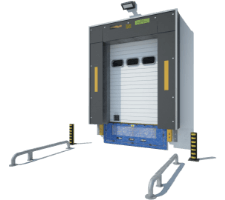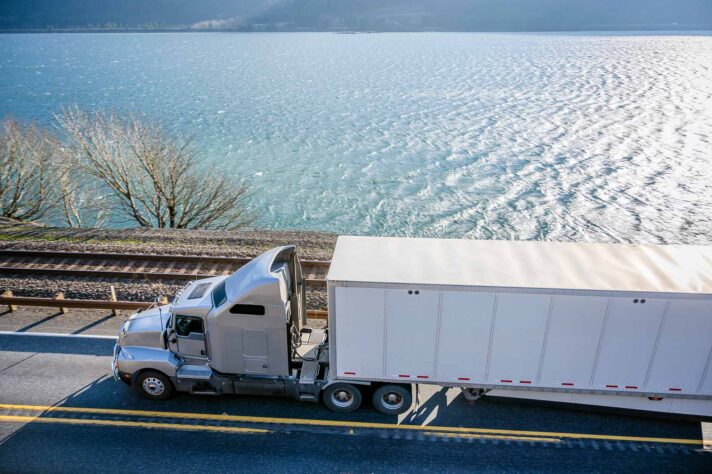Embarking on a workspace relocation requires thorough planning, from assembling a moving committee and setting a budget to packing and inventory management. Hiring experienced cross-country movers, managing IT infrastructure, and keeping employees informed are all key steps. Post-move, update business information and ensure everything is operational. Effective communication, meticulous planning, and adaptability are the pillars of a successful relocation.
Seamless Transition – The Comprehensive Office Move Checklist for Business
Embarking on a business relocation signifies a pivotal moment for any business, marking a transition filled with opportunities as well as challenges. This meticulously crafted office move checklist not only aims to ensure a smooth and efficient transition but also minimizes downtime and operational disruptions. By adhering to this checklist, businesses can look forward to settling into their new space with ease and confidence, ready to embark on their next chapter.


Initial Planning and Preparation Are Crucial
Embarking on an office relocation requires meticulous initial planning and preparation to ensure a seamless transition. This phase lays the groundwork for a successful relocation, addressing key aspects that will dictate the overall flow and effectiveness of the process.
Assemble a Moving Committee
The first thing on the office relocation checklist – forming a dedicated relocation committee is crucial. This team, comprising members from different departments, will be responsible for creating a business moving plan and coordinating and communicating all moving-related activities. Their collective expertise and insights ensure that every detail is accounted for, from logistics to employee relocation assistance, making the process as smooth as possible.
Set a Realistic Moving Budget
Establishing a realistic moving budget is essential for managing the financial aspects of the relocation. This budget should encompass all expenses, including the cost of hiring professional movers, packing materials, and any unforeseen expenses that may arise. Planning financially with a detailed budget ensures that the relocation remains within financial bounds, avoiding last-minute financial stress and ensuring a cost-effective transition.


Timeline and Scheduling
A workspace relocation is a complex project that demands careful timing and scheduling to minimize disruptions and ensure a smooth transition. Developing a detailed timeline and coordinating efforts across departments are essential steps in this process.
Create a Detailed Moving Timeline
Creating a detailed timeline is critical for a seamless business relocation. This timeline should outline key milestones and deadlines, including when to hire professional office movers, start packing non-essential items, complete all packing, and the final date of the relocation.
It serves as a roadmap, guiding the committee and all employees through the process and ensuring that tasks are completed in an orderly and timely manner. By setting clear expectations and deadlines, a well-crafted timeline helps prevent last-minute rushes and ensures a coordinated effort.
Coordinate With the IT Department
Coordinating with the IT department is essential for a smooth transition of IT infrastructure and services. This involves strategizing the relocation of servers, computers, and communication systems, as well as ensuring that internet and phone services are set up in the new location before the relocation.
The goal is to minimize downtime and ensure that employees can resume work with minimal disruptions. Planning should include data backups and setting up temporary workstations if needed. Effective coordination with IT professionals ensures that technological aspects of the relocation are handled efficiently, keeping the business operational throughout the transition.


Hiring Professional Long-Distance Movers Is The Best Decision You Could Make
Securing the right professional long-distance moving services is a cornerstone of a successful business relocation. The process involves more than just transporting items from one location to another – it requires detailed coordination, experience in handling work equipment, and an understanding of the business’s operational needs.
Selecting the Right Long-Distance Moving Company
Choosing the right relocation company, such as Cross Country Moving Company, involves more than just finding someone who can transport items from point A to point B. It requires a partnership with a cross-country moving services provider that understands the complexities of business relocations and has the experience and resources to handle them. Begin the search by seeking recommendations for cross-country moving companies from business associates who have undergone similar moves, and conduct online research to read reviews and testimonials.
When you have a shortlist, vet each cross-country moving company thoroughly. Check their licensing and insurance credentials to ensure they are qualified to operate and provide relocation services. Request detailed quotes from each company, ensuring they include all potential costs to avoid surprises.

Storage
Cross Country Moving Company is the most trusted name in auto industry in the country.

Auto Transport
Cross Country Moving Company is the most trusted name in auto industry in the country.
Moving Insurance
Cross Country Moving Company is the most trusted name in the relocation industry in the country.
Check Out Insurance and Liability Considerations
Understanding insurance options and liability coverage is essential when hiring movers. Inquire about the company’s insurance policies, including the extent of coverage for damaged or lost items during the relocation. Review your own business insurance policies to see if they offer any coverage or if additional riders are needed for the relocation. Ensuring adequate insurance and liability coverage provides peace of mind and financial protection against unforeseen incidents during the relocation process.


Tips for Packing and Inventory Management
A systematic approach to packing and inventory management is crucial for a seamless business relocation, ensuring that all items are accounted for and arrive safely at the new location.
Conduct a Comprehensive Inventory
Making a comprehensive inventory list of all equipment, furniture pieces, and supplies is essential before the relocation. This step involves cataloging every item, from large pieces of furniture to small office supplies, and noting their condition.
An inventory not only helps in keeping track of the company’s assets but also aids in planning the layout of the new space, ensuring that all necessary items are moved and that surplus or outdated equipment is disposed of. This meticulous process minimizes the risk of loss or damage and facilitates a smooth setup in the new space.
Packing Strategies for Work Equipment
When packing office equipment, employing best practices is crucial to protect sensitive electronic devices and documents. Electronics like computers, printers, and servers require careful handling, often with original packaging or, alternatively, with bubble wrap and sturdy boxes clearly marked as fragile.
Sensitive and important documents should be securely packed in lockable file boxes, with confidential materials possibly requiring special handling procedures in compliance with privacy laws and company policies. Labeling boxes clearly with their contents and designated locations in the new space will streamline the unpacking process.


Employee Communication and Responsibilities
Effective communication and clear delegation of responsibilities to employees are key elements in ensuring a smooth office relocation. Here are some tips on how to keep the employees happy and the relocation on track.
Keeping Staff Informed Is Key to a Smooth Transition
Regular communication with employees about the relocation plans, expectations, and their individual responsibilities is fundamental.
This should begin as soon as the decision to relocate is made and continue throughout the process of moving cross country.
Updates can be communicated through various channels, such as emails, meetings, online platforms like Zoom, and a dedicated section on the company intranet.
These communications should cover all aspects of the relocation, including the timeline, reasons for the move, how it will benefit the company and employees, and what is expected from each team member. Additionally, providing a platform for employees to ask questions and express concerns is vital. This open dialogue ensures that employees feel valued and involved, reducing resistance and fostering a collaborative atmosphere.
Assigning Employee Packing Tasks Is Key to Organizing an Office Move
Delegating packing tasks to employees ensures that both personal and shared spaces are properly packed and organized. Provide clear instructions and deadlines for packing personal desks, files, and common area items. Supplying necessary packing materials and a checklist can help streamline this process.
This approach not only distributes the workload but also encourages employees to declutter and organize their spaces, facilitating a smoother transition to the new office. On the other hand, you can always rely on experienced movers and their professional packing services to take care of everything.


Finalizing the Office Move
Finalizing the office relocation involves more than just physically relocating assets – it’s about setting the stage for the company’s next chapter of growth and efficiency. Here are all the steps you need to think about.
Setting Up the New Workspace
Arranging the new workspace layout is a critical step in finalizing the move. The setup should aim to enhance productivity and cater to the needs of the employees. Consider ergonomic principles in the arrangement of workstations, ensure common areas are accessible and inviting, and make use of natural lighting wherever possible.
Incorporate feedback from employees on their workspace needs and preferences. This thoughtful approach to designing a new space not only boosts morale but can also lead to improvements in efficiency and job satisfaction.
Post-Move Adjustments and Feedback
After the move, it’s important to address any issues that arise promptly. This may include anything from IT problems to logistics concerning the layout or the functionality of workspaces. Gathering feedback from employees about the relocation and their new working environment is crucial.
This can be done through meetings or an anonymous feedback form. Listening to and acting on feedback demonstrates to the employees that their input is valued and considered, fostering a positive work culture. Additionally, this feedback is invaluable for improving future processes, making the next transition even smoother.


Post-Move Considerations – What to Do in the New Space?
After the physical relocation, it’s crucial to address several post-move issues to ensure the business operates smoothly and maintains its professional image and connections. Start by updating business information and IT data.
Updating Business Information Is the First Step
A key post-relocation task is to update the business’s address, contact information, and any other relevant details across all platforms. This includes notifying clients, suppliers, service providers, and partners of a new location.
It’s also important to update this information on your website, business cards, letterhead, and social media profiles. Don’t forget to change the address with postal services and any subscriptions or memberships. This checklist ensures that all stakeholders can reach you without interruption, maintaining the continuity and professionalism of your operations.
IT and Infrastructure Testing Is Crucial
Once moved, it’s imperative to ensure that all IT systems and infrastructure are fully functional to avoid disrupting business operations. This involves thorough testing of network connections, data systems, telecommunication setups, and any specialized equipment your business relies on.
IT staff should check that all data migrated successfully and securely, and that backup systems are in place and operational. Promptly addressing any issues is crucial to resuming normal business activities with minimal downtime. Ensuring a smooth transition of IT and infrastructure supports your team in getting back to work efficiently in the new office environment.


Turning a New Leaf – Navigating the Journey of Office Relocation With Precision and Grace
A successful office relocation is a multifaceted endeavor that hinges on meticulous planning, strategic coordination, and clear communication. Ultimately, an office relocation, when executed effectively, offers an opportunity for renewal, growth, and enhanced productivity, marking a new chapter in the company’s journey. To ensure your business starts off on the right foot, contact us at Cross Country Moving Company and allow our team to relocate your entire office smoothly and stress-free.
Frequently Asked Questions
How Far in Advance Should We Start Planning Our Office Move?
Start planning the office relocation six months to a year in advance, depending on the size of the office and the complexity of the process.
What Are the Key Roles of an Office Moving Committee?
The office moving committee oversees project management, communication, logistics, budgeting, and troubleshooting throughout the relocation process.
How Do We Choose a Reliable Moving Company for Our Office Relocation?
Choose a reliable moving company by seeking recommendations, reading reviews, verifying their credentials, and comparing detailed quotes.
What Are the Best Practices for Packing Office Equipment?
Best practices and office packing tips include using original packaging when possible, employing bubble wrap and sturdy boxes for electronics, and clearly labeling boxes with contents and location.
How Can We Minimize Downtime During the Move?
Minimize downtime by planning the relocation during off-hours or weekends, coordinating closely with the IT department for quick setup, and having a clear unpacking plan.





